| Umělec magazine 2002/1 >> Situations, Circumstances and Particips | List of all editions. | ||||||||||||
|
|||||||||||||
Situations, Circumstances and ParticipsUmělec magazine 2002/101.01.2002 Vít Havránek | profile | en cs |
|||||||||||||
|
"“It was at the time when I was working with the phenomena of surface adjustments, transparency, reflection — reflection of a situation within an image and the theme on the margin of the image — that was when I started using stencils, spray paint, varnished surfaces and sheets of plastic.”
And so Czech artist Tomáš Vaněk abandoned oils to look for something else, something traditional canvas painting could never give him. Nevertheless, he persisted in specifying a particular theme, or, more precisely, defining his specific points of interest within the painted image. For his graduation work, exhibited at the Fine Arts Academy in Prague in 1997, he deliberately chose the title Barvy Laky (Paints and Varnishes)1, referring to a slogan used by a Czech monopoly known for its wide range of products capable of adjusting the shape and size of a multitude of surfaces. Abstraction saw a brief comeback on the Czech scene in 1996 after the exhibition Česká AbstraHce2 (Czech AbstraHtion), which had set out to outline the importance and broader validity of abstract visual language in the country. Based on this new topic, it was the very inconspicuousness of Vaněk’s Paints and Varnishes that first attracted attention to his work. His images often work on the principle of mimicry, imitating to varying degrees the colors of the surroundings: monochromatically diluted, light beige, green, glossy, tame tones of varnish and paint. They freely and rather intuitively communicate with a specific place and environment, reflecting and absorbing. This only becomes apparent, though, upon close inspection, and only after entering into proper communication with the images. The glossy surfaces to a certain extent are capable of reflecting us, of mirroring our surroundings. His titles enhance the blurred impression we get from them: Gloss, Jelly, Mirror, Curtain. With the Paints and Varnishes series, Vaněk, for the first time in his artistic career, had staked out a position with great resolution, applying his own particular blend of intuition and the conceptual, believing art and painting are in fact situations and these situations appear to be an unstable system of relations and interactions. Within this animated system, individual working elements may become dominant. Vaněk’s first concern is to analyze the situation in the broadest manner possible (in the case of Paints and Varnishes, it was an analysis of the production and creation of a colored surface — the image). This he accomplishes by creating charts in which he uses arrows to link his ideas, highlighting their mutual relationships and cohesion. Vaněk is not looking for substance in Paints and Varnishes; he does not express himself using metaphors, not even abstract metaphors like ornaments. He does not rely on the “internal” power of the canvas, as it might seem at first sight. He brings the medium of painting into his own scheme and then he decides what it could mean and how it could possibly affect the contemporary world. Painting is an artistic practice in which the artist is simultaneously communicating with the whole history of painterly innovation and the viewer in the real space of the gallery. “Surface adjustment” goes to the heart of this. Vaněk wishes to reduce the function of painting to being the bearer of surface adjustment. In this sense, “adjustment” is neither decorative nor spiritual. It reflects all the possibilities the painter has at hand, under certain conditions (materials made of paints and varnishes), while attempting to enter into a specific optical communication with the viewer: reflections. Reflection should be understood here in its semantic sense, as being much more than optical mirroring. Stencils When Tomáš Vaněk first began using stencils — now symptomatic of his work — an inaccuracy resulted from the contrast between the reflective take on a situation and the final form itself. The dilemma was that composition (and its negation) had become a routine artistic approach when solving the relationship between the stencil and painting’s surface. But outside the art world, graffiti and tags are sprayed directly into a living situation (the location is determined by the ease, speed, and maybe even risk, of access). Under these conditions, spraying exists within the immutable constellation and authentic coordinates of a specific place. But a stencil inherently contains within it the dimension of mechanical reproducibility. Vaněk sought a way to apply stencils to sheets of plastic, carpets and other surfaces, wishing to diminish the meaning of the image’s background and integrate the stencils into the environment as naturally as possible. After a few misfires, he discovered that the best solution was to spray the stencils directly onto inner and outer gallery walls — no mediums, no backgrounds. Another surprisingly academic solution was to stencil stretched and prepared canvases. Made specifically for an exhibition in the entrance lobby and gallery of the Cash Reform and Gallery Druhá Modrá in Brno, Particip no. 6 was the result of Vaněk’s continued combination of these two approaches. He relates: “A simple application of older stencils used for assembling images. Spraying them directly onto the marginal surfaces of an entrance lobby — reception. Repeating the same themes by spraying them on the small canvases hanging one floor below in the gallery as an ‘echo’ of the upper space.”3 With Particip no. 6 Vaněk no longer conveyed a meaningful composition or story, as he had in his earlier work. Instead he chose small white square canvases, which barely accommodated the dimensions of the individual images, as backgrounds. The images themselves were symbols of things, objects or events: a TV set, an arrow, a hand holding a revolver, breasts, the fragment of a gun stock, squares, a row of triangles. From the beginning Vaněk has understood and used the stencil as a semantic device, as a synonym for stereotype and convention. Indeed his whole approach to the creation of a painting was one of stereotype. The entire diverse discipline of painting had been so exhausted, crammed with an infinity of discoveries, evolution and context that he chose the stencil as a way to evaluate the medium. Comparing it to the practice of repeating one act, one motion (stencil, sentence, question, cliché) over and over again until it becomes meaningless, nothing but an empty instrument informing us of the stereotype within. In communication, a stereotype can be used for both the production and reading of symbols. Aided by the constant repetition inherent in his Tai Chi practice, Vaněk was able to reach out and see his own stereotypes, a Wittgenstein process of cleansing but on the level of very basic experience in the visual world. This understanding gives new meaning to Vaněk’s apparently simple images. Short cuts, gaps between the signifier and the signified, suddenly come to the foreground: a crisis of visual communication demonstrated by stereotypes using visual signs. In the age of mediated information and knowledge, frameworks, relationships, and situations become more important than the particular meanings arbitrarily assigned to them. Figuratively speaking, stencils that elicit their frameworks are more important than the representations they bear. Particip no. 6 contains one further theme, one Vaněk continued to develop in his next several works: the doubling and weaving of the “actual” sprayed stencil and the image as a stencil sprayed on a painting. Background Vaněk’s tautological toying with the image as background came to maturity in 2000 in the exhibition Nápad-Šablona-Posun-Střik (Idea-Stencil-Shift-Spray) at Gallery Na Bidýlku in Brno.4 For this exhibition he sprayed stencils of wooden paneling on all the gallery walls and hung two paintings of wooden paneling over the stencils. The paintings blended perfectly into the background and were essentially invisible. Creating backgrounds has become a Vaněk hallmark, with curators at numerous exhibitions (Vzdálené podobnosti — Něco víc než kosmetika, Konfrontace, etc.5) taking note; by creating popular backgrounds for group shows Vaněk has become a pet sparring partner for his colleagues, someone they can play off of and use. But his particips do more than integrate the various artifacts of other exhibiting artists; they instantiate their relationship to a specific gallery space. The paneling in the exhibition is an allusion to nouveau riche mountain cabin esthetics, cozy living rooms, saunas, and maybe even jazzy jeeps parked in the driveway. Vaněk does not resurrect the tired project of creating a nice and cozy space for the purpose of confronting the viewer with it in the gallery. Instead, the space he creates is declared through the stencil itself. Vaněk works with it on an abstract order; he visually conventionalizes it. His backgrounds verify his intention of imbuing the wooden paneling stencil with the same kind of real-wood qualities Czech handymen and the nouveau riche bourgeoisie assign to the real thing by perfectly coexisting with other works. This confirms the theoretical postulate that, from the point of view of credibility, an artistic quotation to the power of three or four becomes more real than the actual wood boards themselves. In Idea-Stencil-Shift-Spray, with the background as guide, Vaněk felt free to set up a table, two chairs, a glass, a bottle of water and several notebooks safe and snug within the corner of the installation. Interaction This pleasant nook was created for the comfortable browsing of his stencil notebooks. Particip no. 15 became a natural extension of this space. In it Vaněk succeeded in finding a way to conceptually resuscitate the all-too-stale concept of the “art book.” Realized in cooperation with the library at the Museum of Decorative Arts in Prague6, this particip made the author’s notebooks accessible to the public. To promote the event, Vaněk distributed the library’s loan cards with his name and the title of the particip. Cardholders could view the notebooks in the library free of charge. There have been numerous public art projects of this type concerning the socialization of art, but Vaněk’s approach is more inventive; it is a fluid and unforced merging with the environment. Art often separates itself from the social milieu and places itself in the position of being decoration, something separate and special. Vaněk on the other hand allows his work to grow into structures, to develop them and transform them based on their own metapositions. The notebooks and Particip no. 15 delve deeply into the issues of reading, text linearity and the consumption of information through print media. The success of this work deriving for the fact that Vaněk followed his own intuition and avoided the pitfalls of outside theoretical reference. In the end, the work integrated with the public library, and more importantly, Vaněk triumphed in disrupting the feeling of social exclusivity one might feel while perceiving “art.” Particip no. 8 is perhaps more illustrative of how Vaněk has progressed as an artist. This was his first attempt to transfer the tautology of the stencil from the gallery into daily life. At Malamut action festival, Ostrava, Czech Republic7, Vaněk rambled up and down the busy downtown area spraying additional sets of doorbell buzzers over and next to real buzzers on residential buildings, a major mobile operator shop, the municipal police, and others. A short time later Vaněk returned to Prague and stenciled florescent arrows on the 81 concrete pillars of the Trója tram bridge in Prague. As the tram crosses the bridge, the arrows appear to tick past in the animated motion of a clock. But this was not only an illustration of animated technique; the arrow theme refers to pointing, and for Vaněk specifically it is pertinent to the stencil character of visual codes. An arrow is a crucial, yet plain and simple, symbol in his thinking. It symbolizes the interactive influences at work among the factors that define each “situation” as well as representing his whole generation’s deeply hidden existential desire to move forward. Philosopher Václav Bělohradský has described this feeling as a certain civilization force that is pushing everything further, with total disregard for the will and ideas of the individual, community and society; and according to Bělohradský, nobody knows who controls this movement or where any of it will end up. Lada and Lada For Particip no. 18, Vaněk took his car apart. The car was originally supposed to be a Lada — the perfect machine archetype with all its sharp angles. In the end Vaněk disassembled his own car, the Škoda 120, and sprayed the individual pieces in black and silver across vast sheets of paper. The visual maps he created of the individual components of the car reveal what a complicated, perfectly abstract and de facto aggregate the car really is. To the layman the overall function of the components is so entirely hermetic that it forms a whole universe of detail and heterogeneity. A universe of functions that so often is skillfully obscured under the seamless casing of the machine. Roland Barthes, using the example of the Citroen D. S. 19, writes in his Mythologies that roundness is always an attribute of perfection because its opposite, angles and lines, expresses human technical operation and assembly.8 Vaněk’s understanding of civilization has clearly changed, and his study goes a long way towards documenting this. Whereas advertising concentrates all its abilities on inspiring needs that can only be gratified through the symbolic essences of its products and packaging, Vaněk returns to pure objects; he visualizes the thinking process at the basis of function. The image of the disassembled car inherently contains within it disillusionment from ideas of perfection, the foregone conclusion of production and function; it illuminates the processes of its projection, the search for materials, the entire sequence of necessary premises and the immense human effort that leads to the step on the gas pedal — a simple movement of the right foot. This is not the first time we come across viewpoints of this nature in Vaněk’s work. His sprays of electric wires and his artificial nonfunctioning electric lights (exhibitions Slepená intimita and BJ na vzestupu9) are based on analogous sentiments. Tautology is not the intention, nor is it intended to be a trick of some kind. Rather it’s a kind of soft and subtle reflection. (It can be surprising how attractive electric wiring is for like-minded artists. See Pierre Joseph’s project with electric bells, or Roman Ondák’s light-socket installation.) But the Lada car sprays have deeper history. In the summer of 2001, Vaněk stencil-sprayed the well-known book illustrations of Czech artist Joseph Lada onto the crumbling warehouse walls of an abandoned building for a group exhibition in Broumov. Vaněk gave them his personal touch and added whip-tit-and-cock alterations to the innocent sketches. These private and almost intimate reflections instantly became a new particip. For the first time Vaněk was participating in a situation by using a specific artist and artwork. When I first saw Vaněk’s “Lada” sprays — which won him the 2001 Jindřich Chalupecký Award — I thought there was a private connection there with his children, that he was playing with the nostalgic return to childhood parents typically experience when reading bedtime stories to their children or when strolling through parks on Sunday afternoons. Josef Lada’s notoriety in the Czech Republic paradoxically turned the theme into activist work that concerned practically everybody in the country. Explosive outrage from the family of Lada finally forced black curtains over Vaněk’s work in the National Gallery, an act that set off a minor wave of controversy over censorship and artistic license. I don’t wish to dwell on the Lada case here, but it is an interesting issue, one related more to an analysis of media patterns and journalistic approach, critics and galleries than to Vaněk himself. His position in the entire case was mostly passive and evasive; he failed in the role of “fast thinker” and zealous theoretical advocate of his work. I did find one idea he had on how to respond to the censorship of his work of some interest. He wished to mass produce the offending stencils and arrange for their distribution in a high-circulation publication. Coming from the context of Vaněk’s work, the Lada principle is quite unique. But the way it was carried out was also entirely in line with Vaněk’s thinking. The particip consisted of complementing several of Lada’s drawings with the significant sex organs, but the drawings were otherwise left unchanged. The sexual morphology — beefy and bulging in the style of Josef Lada and latently visible in his drawings according to Vaněk — manifested itself with perfect clarity. Here Vaněk is offering us the chance to examine all of Lada’s drawings from this new angle. And despite all the noise, what will remain after the Lada case blows over is one popular artist’s strong visual and interpretative viewpoint. Translated by Vladan Šír 1. The series of paintings Paints and Varnishes was Vaněk’s diploma work at the studio of Vladimír Kokolia and was exhibited at the Academy of Fine Arts and Gallery U Bílého Jednorožce in Klatovy in 1998 2. Czech AbstraHtion: J. Černický, J. David, S. Diviš, F. Dvořák, L. Knilli, J. Kovanda, R. Novák, M. Novotný, P. Pastrňák, P. Pavlík, P. Pisařík, M. Polák and L. Jasanský, V. Stratil, V. Skrepl, M. Vaňková, I. Vosecký, Václav Špála Gallery, Prague, 1996, curated by M. Dostál, M. Pokorný 3. The exhibition Monokiny, entrance lobby of the Cash Reform and Gallery Druhá Modrá, Brno, 1999 4. Idea-Stencil-Shift-Spray, 2000, Gallery Na Bidýlku, Brno. Artist Jiří David, exhibiting at the gallery after Vaněk, responded to the exhibition with sensitivity and understanding as he left the wood paneling on the walls and hung his paintings on the background. 5. Vzdálené podobnosti — Něco víc než kosmetika (Distant Similarities — Something More Than Cosmetics), 1999, Collection of Modern and Contemporary Art of the National Gallery in Prague; Konfrontace (Confrontation), 2000, Czech Centre in London 6. Thanks to Dr. D. Okrouhlíková, head of the library of the Museum of Decorative Arts 7. Malamut, action art festival in Ostrava, 1999 8. Roland Barthes, Mythologies, 1957, p. 151 9. BJ na vzestupu (BJ on the Rise), 2000, Gallery Jelení, Foundation and Center for Contemporary Art, Prague; Slepená intimita (Pasted Intimacy), 2001, Gallery Jelení, FCCA Prague 10. Criss/Cross, 2001, Broumov Particips Tomáš Vaněk on particips — the term he uses to describe the actions he conceives for a specific space or location. Particip #24 2001, magazine Artur, no. 7, “On the Situation at the Fine Arts Academy in Prague” Replacing six terms in an article by Zdeněk Beran entitled “Behind the Facade” originally published in the magazine Ateliér, no. 20/2001. Reason? As I was reading, this interpretation offered itself. Particip #23 2001, exhibition Discount 20%, Dům Umění (House of Art), České Budějovice, CZ The entrance space was made with muddy footballs, basketballs, tennis balls, plastic balls, foam balls and kids balls. By muddying the balls and then throwing them against the walls of the gallery, the space was transformed into a new kind of perception, a familiar peripheral experience found in children’s playgrounds, city passages and gyms. Particip #22 2001, Jindřich Chalupecký Award, National Gallery in Prague — Veletržní palác Interpretation of works by Czech painter and illustrator Josef Lada using stencils. Particip #21 2001, exhibition Criss/Cross, Broumov, CZ Participation in Ivan Vosecký’s approach to dealing with legal problems caused by spraying his stencil “All is God’s Will” on buildings in Broumov. I helped him paint over the tags and restore the facades. Particip #20 2001, presented for the exhibition Criss/Cross, Broumov, CZ and the exhibition Maybe It’s Here, Gallery Sýpka, Brno Working with drawings by Josef Lada by shifting their meanings to an interpretation not typically applied to Lada’s work (additional drawing, enlarging, cutting stencils and spraying on selected walls). Particip #19 2001, together with BJ and magazine Umělec, Art Moscow, Central House of Artists, Moscow Spraying the walls of the gallery with stencils of switches and clocks. The organizers painted over the work, claiming it had destroyed the gallery walls. Only specially cut out stencils of graffiti were then exhibited: schematics of situations, such as the static electricity you get when taking off your sweater, or how the sliding escalator hand belts in Prague always slide ahead faster than you go up the escalator, etc. Particip #18 2001, 2001, Gallery Display, Prague Disassembling my car, the Škoda 120, down into its individual parts, laying the parts on a prepared surface (paper 6 x 3.15 m) and spraying over them to form their traces and outlines. The result was two large-format images with internal and external parts. Recycling my property. Particip #16 2001, exhibition Pasted Intimacy, Gallery Jelení, Prague Working with the issue of periphery within the group exhibition Pasted Intimacy. Lights made from white balloons and cardboard tubes were made specifically for this space. By putting them in typical light places, I was able to reach that hard-to-see border between artifact and real object. Particip #15 2001, the library of the Decorative Arts Museum, Prague Series of notebooks with simple sprayed themes — spots. The series was introduced into the lending system of the library. The invitation also served as a registration card. The notebooks are kept under a filed press stamp. Visitors can check them out and look at them at the tables in the library. Particip #14 2000, tram bridge from the Holešovice train station to Trója, Prague Spraying a stencil of an arrow at eye level on 81 pillars of the tram bridge coming from the direction of the Holešovice train station to Trója. When looking to the right in the direction the tram is going, the arrows function as peripheral animation, turning 360°. Take a ride and see. Particip #13 2000, a city art box — the Gallery space of BJ (Headless Horsemen), Komunardů Street, Prague Responding to Kodak’s effort to disguise itself in preparation for the expected riots protesting the IMF meeting in Prague. I sprayed a sign reading “Kodak Is Hiding from Us Across the Street” and exhibited it in the display box on the opposite side of the street. The next day, the box was found broken open and looted. Particip #10 2000, exhibition BJ Wiring, Gallery Jelení, Prague Stencil made specifically for this BJ (Headless Horsemen) exhibition. Stencils of cable wiring, circuit breaker, distribution box and hydrant sprayed on gallery walls. The situation was intended to make the gallery appear like another technical space. Particip #9 2000, exhibition Confrontation, Czech Centre, London Making cut out stencils of wooden paneling specifically for this exhibition and space. Spraying them directly on gallery walls. The situation then functioned as background for certain installation views and also as reference to the actual space: a cafeteria. Particip #8 1999, action art festival Malamut, Ostrava Spraying stencils of door buzzers on entrances to apartment buildings, either next to or opposite the real buzzers. Particip #7 1999–2000, Gallery Na Bidýlku, Brno Specially cut out stencils specifically for this gallery space using the theme of wood and spraying them on the walls. During installation, I worked with the phenomenon of background. I hung two paintings on the sprayed walls. The paintings featured the same design as their background. The theme was taken further when Jiří David “recycled” the background for his show Landscapes. Particip #6 1999, exhibition Monokiny, entrance hall of Cash Reform and Gallery Druhá Modrá, Brno Spraying stencils at the edges of the entrance hall. Simple application of older stencils used for the composition of images in 1998. Repeating the same themes by spraying them on smaller canvases exhibited in a gallery below as an “echo” of the upper space. Particip #5 1999, international symposium C:R:A:N:E:, Quincerot, France Cooperative installation with Jan Mačuška, Watch TV, tools for a TV audience. Spraying stencils of televisions, a notebook with arrows as a TV guide. Particip #4 1999, exhibition Distant Similarities — Something More Than Cosmetics, National Gallery in Prague — Veletržní palác Specially cut out stencils of wooden paneling for Veletržní space. Twenty-eight meters of sprayed walls in the hall with elevators, toilets and entrances to main exposition halls. Installation was intended to warm up the cold functionalist atmosphere of the building and to refer to the peripheral nature of the chosen theme and places. Particip #2 1999, exhibition Colony, with Jan Merta, Gallery Jelení, Prague Cooperative exhibition with Jan Merta. Specially for this exhibition I showed enlarged and cut out stencils from 1998, which were selected by Merta to accompany his painting of a bungalow colony. The stencils were then sprayed on the walls as monumental images. "
01.01.2002
Recommended articles
|
|||||||||||||
|
04.02.2020 10:17
Letošní 50. ročník Art Basel přilákal celkem 93 000 návštěvníků a sběratelů z 80 zemí světa. 290 prémiových galerií představilo umělecká díla od počátku 20. století až po současnost. Hlavní sektor přehlídky, tradičně v prvním patře výstavního prostoru, představil 232 předních galerií z celého světa nabízející umění nejvyšší kvality. Veletrh ukázal vzestupný trend prodeje prostřednictvím galerií jak soukromým sbírkám, tak i institucím. Kromě hlavního veletrhu stály za návštěvu i ty přidružené: Volta, Liste a Photo Basel, k tomu doprovodné programy a výstavy v místních institucích, které kvalitou daleko přesahují hranice města tj. Kunsthalle Basel, Kunstmuseum, Tinguely muzeum nebo Fondation Beyeler.
|







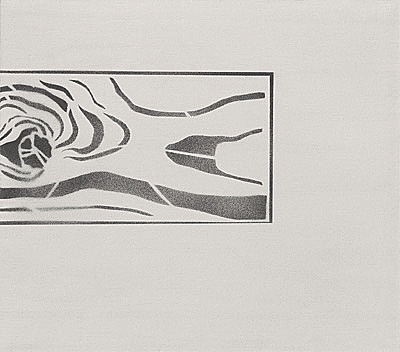
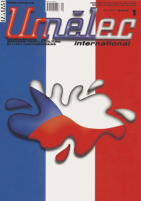

















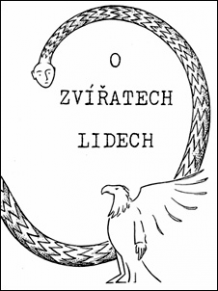




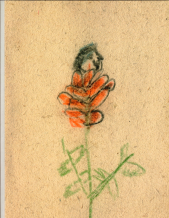
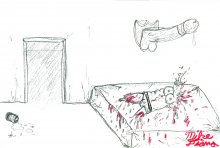

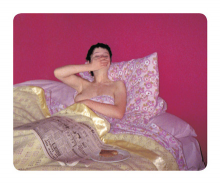


 New book by I.M.Jirous in English at our online bookshop.
New book by I.M.Jirous in English at our online bookshop.
Comments
There are currently no comments.Add new comment